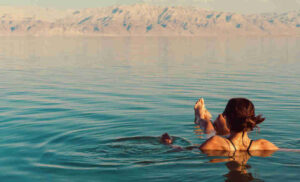In the great monuments and archaeological complexes, the ideal is that there is a complementary museum inside or near its visitable enclosure. This museum serves not only to tell and interpret the history of the place, but also to expose in a more appropriate context (temperature, lighting, etc.) the main findings found there. And that is precisely what happens with the Museum of Petra, which was born in 2019 to value the ‘pink city’ and allow an adequate deepening to those visitors more interested in its archaeological and historical aspects.
What is and where is the Petra Museum
Do not confuse the Petra Museum with the Visitor Center, although it is very close to it, just across the square that welcomes the site. This museum was inaugurated in 2019 by Prince Hussein and those responsible for its design were the Japanese architects Yamashita Sekkei. In total, 1,800 square meters of interior surface, all of it air-conditioned, to which is added a large outdoor space to admire this building of contemporary architecture, although with the necessary sobriety so as not to clash with the environment.
What to see in the Petra Museum
The Museum of Petra consists of 8 large spaces, called “Galleries”, and within them there are interactive resources that help to understand the history of Petra and what is visible today (and what is not) to the eyes of the visitor. Those 8 galleries are:
- Gallery 1: Kaleidoscope of Water
- Gallery 2: Foundation of Petra
- Gallery 3: Nabataean Activity
- Gallery 4: Nabataean zenith
- Gallery 5: The Life of the Nabataeans
- Gallery 6: Nabataean Forms of Expression
- Gallery 7: Decline of Petra
- Gallery 8: Resurgence of Petra
As can be deduced from this arrangement of spaces, the rooms cover all aspects of the Nabataean civilization, which illuminated this city around the sixth century BC and centuries later adopted a certain Romanization, but without losing its essence.
Of all the topics discussed, one of the most important is the use of water by the Nabataeans, explaining the Operation of the water channel which is still visible today in the Siq and which came from a natural spring in Wadi Musa, today identified as the place where the prophet Moses gave his stroke of the rod to give water to his thirsty followers, on his return from Egypt.
Of course, pieces of great historical and artistic value are exhibited, recovered from Petra and exhibited here with their due explanatory posters. There are around 300 and among the ‘must-sees’ are the Goddess of Hayyan (the best example of betyl or aniconic symbol of this local goddess), the monumental bust of Dhu-Shara, the Nabataean mosaic of Gallery 4, the sculpture of the man playing a double flute or the amphorae of Roman times.
Practical information about Petra Museum
- Entrance fee: free, with the entrance to the Petra enclosure which, in turn, is included in the Jordan Pass that is acquired as a visa upon arrival in the country and has a cost from 75 JD. For groups, it is recommended to formalize a reservation through the web, free of charge
- Timetable:
- April to October: 8.30 a.m. to 8.30 p.m.
- November to March: 8.30 a.m. to 7.30 p.m.
- Closing days: not specified, but there are 6 in total throughout the year
In our tours of Jordan, we usually dedicate a full day to Petra. But if in addition to visiting the grounds of the historic city you also want to calmly visit the Petra Museum, you can tell us to dedicate the necessary time to it and reconfigure the circuit, if necessary.



